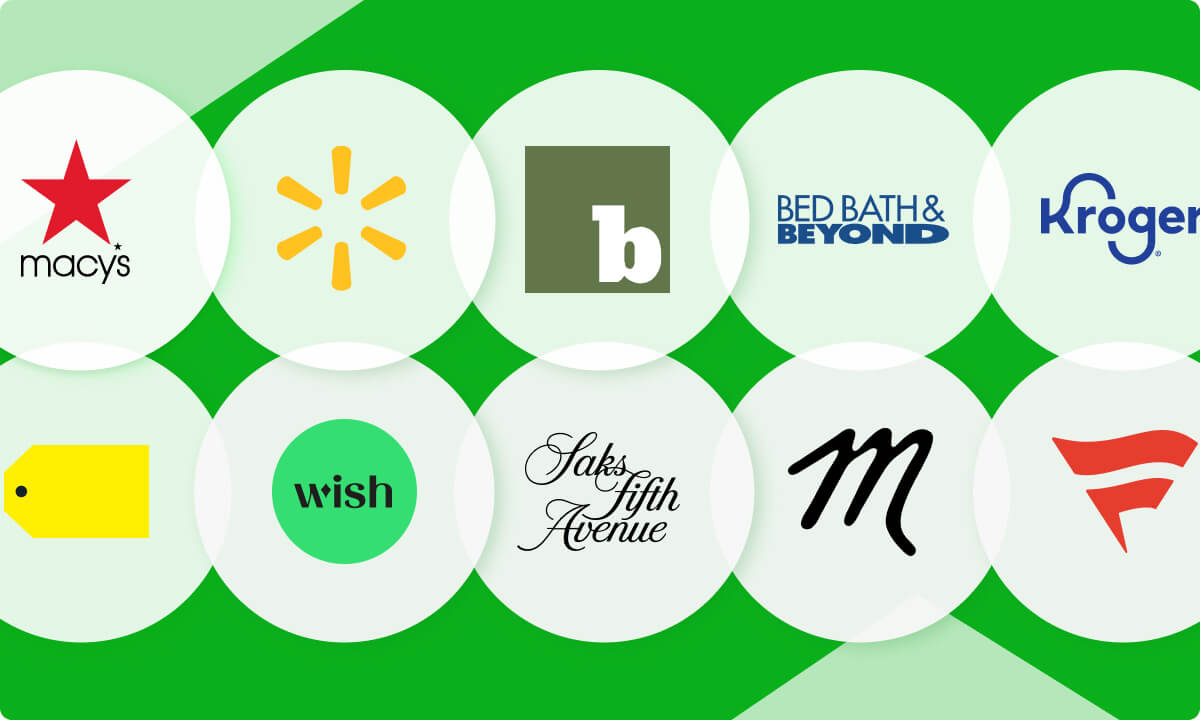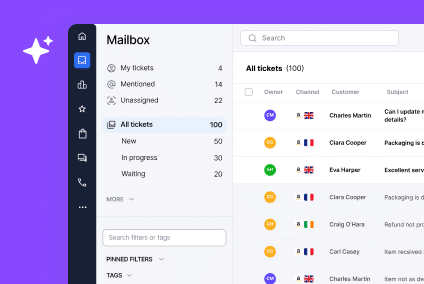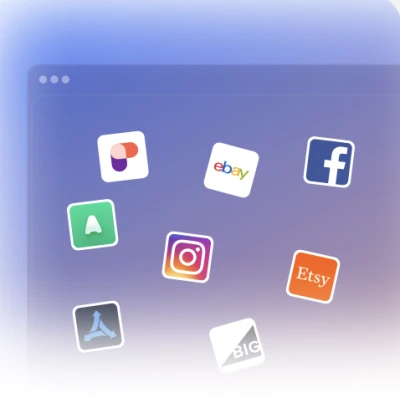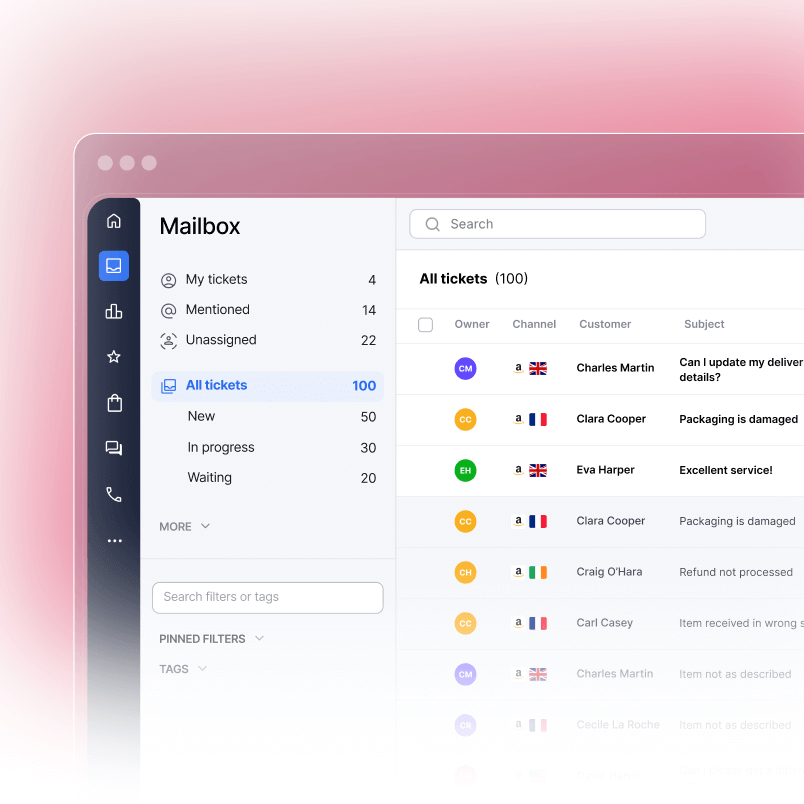Das Internet hat die Geschäftslandschaft erheblich verändert und bietet den Händlern interessante Möglichkeiten. Online-Marktplätze sind heute voll von potenziellen Kunden und bilden einen digitalen Marktplatz, der rund um die Uhr funktioniert. Verkäufer aus dem ganzen Land stellen ihre Produkte einem kaufwilligen Publikum vor. Wenn Sie sich diesem Trend zum virtuellen Marktplatz nicht angeschlossen haben, entgehen Ihnen nicht nur gelegentliche Verkäufe, sondern Sie übersehen auch eine potenzielle geschäftliche Revolution.
In der Welt des elektronischen Handels kann die Verbindung mit seriösen Plattformen Ihrem Geschäft großen Auftrieb geben. Die Kunden strömen zu diesen Online-Marktplätzen nicht nur wegen der Bequemlichkeit, sondern auch wegen des ausgewählten Sortiments und der zuverlässigen Kauferfahrung. Als jemand, der im Verkauf erfolgreich sein will, ist das Ignorieren dieser Plattformen als Verkaufsstrategie gleichbedeutend damit, Geld auf dem Tisch liegen zu lassen – und wer will das schon tun?
Sie fragen sich vielleicht: „Für welchen Marktplatz soll ich mich bei so vielen Möglichkeiten entscheiden?“ Keine Sorge, dieser Artikel soll Ihnen helfen, sich auf den wichtigsten Online-Marktplätzen in den USA zurechtzufinden. Wir werden untersuchen, warum jede ausgewählte Plattform zum Erfolg Ihrer Produkte beitragen kann, wobei der Schwerpunkt auf Rentabilität und Sichtbarkeit liegt.
Macy’s

Macy’s entwickelt sich zu einem beachtlichen Akteur in der Welt des elektronischen Handels. Neben seinen kultigen Kaufhäusern hat sich Macy’s als florierender Online-Marktplatz etabliert und bietet Verkäufern eine Plattform, um mit einem großen und anspruchsvollen Publikum in Kontakt zu treten.
Kosten des Verkaufens bei Macy’s
Wenn es um den Verkauf bei Macy’s geht, gibt es keine pauschale Antwort. Im Allgemeinen müssen Verkäufer mit einer Kombination aus Provisionsgebühren, Auflistungsgebühren und potenziellen monatlichen Gebühren rechnen, die von Ihrer Verkäufervereinbarung und den Kategorien abhängen, in denen Sie verkaufen. Um genaue Zahlen zu erhalten, muss man sich direkt an Macy’s wenden, um die aktuellen Lieferbedingungen zu erfahren, da sich diese Kosten im Laufe der Zeit und je nach Produktkategorie ändern können.
Warum bei Macy’s verkaufen?
Macy’s zeichnet sich als eine der besten Marktplatz-Websites aus, weil es eine geschätzte Position in der Geschichte des Einzelhandels einnimmt.
- Kundenstamm: Macy’s meldet einen Umsatz von 23,76 Milliarden Dollar im Jahr 2023. Durch eine Partnerschaft mit dieser etablierten Marke haben Sie die Möglichkeit, von ihrem umfangreichen und treuen Kundenstamm zu profitieren und sich Ihr Stück vom Kuchen zu verdienen.
- Markenassoziation: Der Verkauf über Macy’s eröffnet potenziell Möglichkeiten für eine höhere Sichtbarkeit und eine renommierte Zugehörigkeit für Ihre Produkte. Dieser Vertrauensfaktor ist von entscheidender Bedeutung, wenn es um die Frage geht, wo der beste Ort für den Online-Verkauf von Artikeln ist – schließlich kann die Präsenz auf Plattformen, denen die Verbraucher vertrauen, die Kaufentscheidung direkt beeinflussen.
- Zugang zu Werbeaktionen: Mit seiner treuen Fangemeinde und seiner erstklassigen Positionierung bei wichtigen Shopping-Events wie dem Schwarzen Freitag und dem Weihnachtsgeschäft wird die Investition in eine Partnerschaft mit Macy’s den Weg für ein beträchtliches Wachstum ebnen. Verkäufer haben die Möglichkeit, an Flaggschiff- und kategoriespezifischen Verkäufen und Werbeaktionen teilzunehmen, um ihren Umsatz zu steigern. Marketplace-Artikel sind auch in das Kundenbindungsprogramm Star Rewards von Macy’s integriert, wodurch sie für unsere engagiertesten Kunden noch attraktiver werden.
Verkaufen bei Macy’s?
Erfahren Sie mehr über die Integrationen von eDesk und Macy’s und bringen Sie Ihren Kundenservice auf die nächste Stufe
Kundenservice-Software für Macy’s Marketplace-Verkäufer ->
Walmart
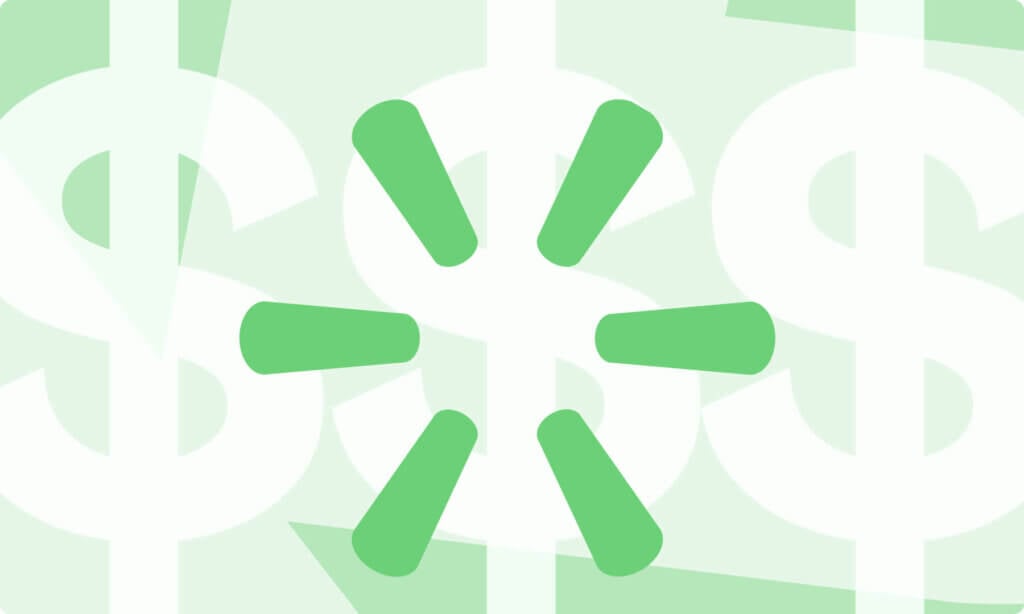
Als einer der größten Marktplätze in den Vereinigten Staaten bietet Walmart mit seiner Online-Präsenz eine solide Plattform für Verkäufer, die einen großen und vielfältigen Kundenstamm erschließen wollen. Er wird oft als einer der besten Online-Marktplätze bezeichnet und zieht Millionen von kaufwilligen Kunden an.
Kosten für den Verkauf auf Walmart
Der Verkauf auf diesem riesigen elektronischen Marktplatz ist ein attraktives Angebot, aber was kostet es? Dann wird es Sie freuen zu hören, dass die Einrichtung eines Geschäfts auf Walmart.com kostenlos ist – es fallen keine monatlichen Gebühren oder Kosten für die Ersteinrichtung an, was sehr verlockend sein kann. Stattdessen arbeitet die Plattform nach einem Provisionsmodell, bei dem Sie eine angemessene Vermittlungsgebühr erhalten, sobald ein Artikel verkauft wird. Diese Gebühren variieren je nach der Kategorie, in die Ihr Produkt fällt, und liegen in der Regel zwischen 6 % und 15 % des Verkaufspreises Ihres Produkts.
Auch wenn keine Abonnementkosten anfallen, könnten Investitionen in wettbewerbsfähige Preis- und Marketingstrategien zusätzliche Kosten verursachen – eine notwendige Investition, um sich in einem so geschäftigen E-Commerce-Umfeld zu behaupten.
Warum auf Walmart verkaufen?
Für Unternehmen, die ihre digitale Präsenz auf angesehenen E-Märkten ausbauen möchten, könnte ein Zusammenschluss mit Walmart nicht nur strategisch sinnvoll, sondern auch notwendig sein, um in der heutigen hart umkämpften Online-Arena bestehen zu können.
- Erreichen Sie neue Zielgruppen: Tausende und Abertausende strömen täglich zu walmart.com, um alles von Elektronik bis hin zu Kleidung zu finden. Inmitten dieses Stroms potenzieller Kunden zu sein, könnte den Bekanntheitsgrad und die Verkaufszahlen Ihrer Marke erheblich steigern.
- Markenassoziation: Aber das vielleicht überzeugendste Attribut ist sein Ruf. Als geschätzter Name im Einzelhandel – gleichbedeutend mit erschwinglicher Qualität – kann die Verbindung mit der Marke ein gewisses Vertrauen auf Sie übertragen. Und dieses Gütesiegel könnte genau das sein, was Sie von Ihren Mitbewerbern in dieser schnelllebigen Welt des elektronischen Handels auf Marktplätzen unterscheidet.
- Tools zur Verkäuferunterstützung: Darüber hinaus bietet Walmart eine überzeugende Reihe von Verkäufertools zur Rationalisierung der Abläufe: von Bestandsverwaltungssystemen, die sich mit Ihrer vorhandenen Software synchronisieren lassen, bis hin zu detaillierten Analyseeinblicken, die dabei helfen, die Leistung zu verfolgen und fundierte Geschäftsentscheidungen zu treffen.
- Bequemes Fulfillment:Walmart bietet berechtigten Verkäufern den Vorteil eines kostenlosen zweitägigen Versands und erhöht damit die Attraktivität Ihrer Angebote für Kunden. Genießen Sie den Vorteil eines schnellen Versands, der mit dem von Amazon Prime vergleichbar ist, und das ohne den intensiven Wettbewerb. Gegen eine geringe Gebühr haben Sie sogar Zugang zum Fulfillment-Service von Walmart. Schicken Sie Ihr Inventar einfach an Walmart und lassen Sie Walmart die Logistik für Sie erledigen.
Verkaufen bei Walmart?
Erfahren Sie mehr über die eDesk- und Walmart-Integrationen und bringen Sie Ihren Kundenservice auf die nächste Stufe
Kundenservice-Software für Walmart-Marktplatz-Verkäufer ->
Bonanza
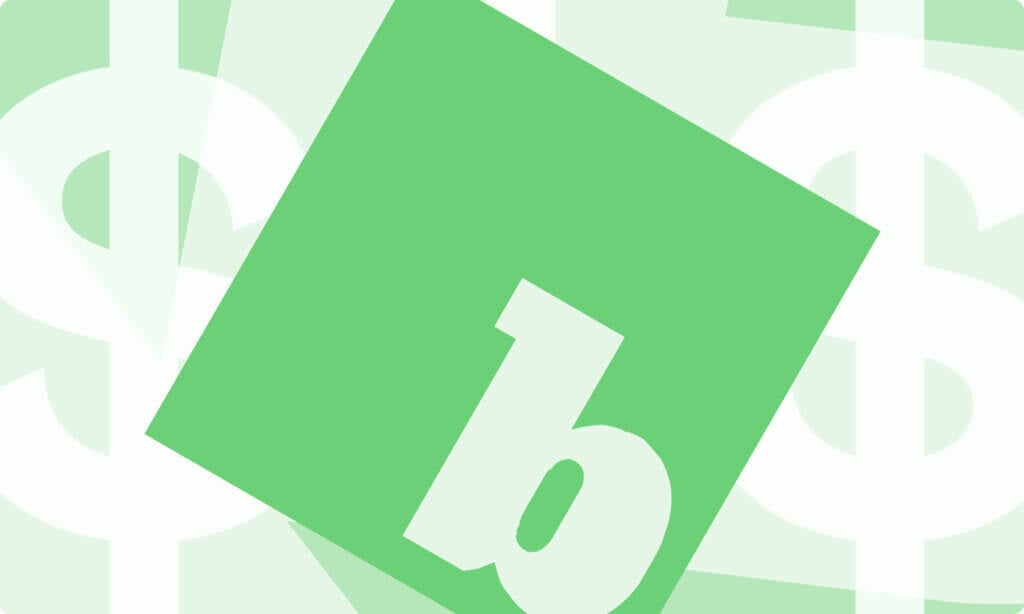
Bonanza hat sich eine Nische als lebendiger, verkäuferorientierter Online-Marktplatz geschaffen. Sie hebt sich dadurch ab, dass sie die Bedeutung der Schaffung eines unternehmerischen Umfelds hervorhebt, in dem kleinere Unternehmen gedeihen können.
Kosten für den Verkauf auf Bonanza
Bei Bonanza ist der Einstieg budgetfreundlich. Das Einstellen Ihrer Artikel ist tatsächlich kostenlos – ja, Sie haben richtig gelesen! Die Aufnahme Ihrer Produkte ist kostenlos. Beim Verkauf erhebt Bonanza nur eine Grundgebühr von 3,5 % des endgültigen Verkaufspreises (vorausgesetzt, der Verkaufspreis liegt über 500 $; bei weniger als 500 $ beträgt die Mindestgebühr 0,50 $). Dieser kosteneffiziente Ansatz macht ihn zu einem der besten Orte für den Online-Verkauf im Jahr 2022 und darüber hinaus.
Wenn Sie Ihre Sichtbarkeit erhöhen und die Verkäufe ankurbeln möchten, bietet Bonanza optionale Werbeprogramme an, die den endgültigen Provisionssatz an die Anzahl der Käufer anpassen, die Sie zu Ihren Inseraten führen möchten.
Warum auf Bonanza verkaufen?
Zunächst einmal wird Bonanza oft als die beste Art und Weise angepriesen, Dinge für Unternehmer zu verkaufen, die im Vergleich zu Titanen wie Amazon oder eBay weniger Konkurrenz suchen. Hier sind noch ein paar weitere überzeugende Gründe:
- Benutzerfreundliche Plattform: Der Einrichtungsprozess auf Bonanza ist unglaublich einfach und problemlos und auf diejenigen zugeschnitten, die Einfachheit schätzen.
- Eingebauter Kundenstamm: Durch seine eigenwillige Art hat sich Bonanza eine treue Anhängerschaft geschaffen. Diese Käufer sind häufig bei Bonanza anzutreffen, weil sie auf der Suche nach einzigartigen Fundstücken sind, die nicht auf den üblichen Marktplätzen zu finden sind.
- Befähigung der Verkäufer: Mit Tools wie dem direkten Chat mit Käufern, detaillierten Leistungsstatistiken und der Integration von Mirakl Connect – einer Unternehmensplattform für die Verwaltung von Marktplatzaktivitäten – haben Verkäufer alles, was sie brauchen, direkt zur Hand.
- Anpassbare Stand-Optionen: Stellen Sie sich vor, Sie könnten Ihre eigene kleine Ecke des Internets personalisieren – Ihr „Stand“ auf Bonanza kann Ihre Marke in Aussehen und Atmosphäre widerspiegeln.
Denken Sie daran, in neue digitale Bereiche zu expandieren? Diejenigen, die nicht irgendeine Website suchen, sondern die beste Website für den Verkauf von Gegenständen, sollten sich überlegen, ob sie ihr Flair in die abwechslungsreichen Weiten von Bonanza einbringen wollen.
Verkaufen auf Bonanza?
Erfahren Sie mehr über die eDesk- und Bonanza-Integrationen und bringen Sie Ihren Kundenservice auf die nächste Stufe
Kundenservice-Software für Macy’s Marketplace-Verkäufer ->

Bed Bath & Beyond
Bevor wir uns in die Einzelheiten des Verkaufs bei Bed Bath & Beyond vertiefen, wollen wir ein paar Unklarheiten beseitigen. Kürzlich gab es eine Verwechslung mit der Umfirmierung von Overstock, aber um das klarzustellen: Overstock bleibt ein eigenständiges Unternehmen; es hat sich nicht in Bed Bath & Beyond umbenannt.
Was wir stattdessen gesehen haben, ist eine Weiterentwicklung des Marktes von Bed Bath & Beyond. Das Unternehmen hat sein E-Commerce-Angebot erweitert, indem es Drittanbieter zur Teilnahme an seiner Plattform einlädt und so sein Produktangebot über Haushaltswaren hinaus ausweitet. Wenn Sie jetzt hier verkaufen, sind Sie Teil einer geschätzten Marke, die seit Jahrzehnten Häuser ausstattet.
Kosten für den Verkauf bei Bed Bath & Beyond
Bei Bed Bath & Beyond werden Sie auf ein traditionelles Provisionsmodell treffen. Der Prozentsatz kann je nach Kategorie variieren, liegt aber meist in der Größenordnung des typischen Einzelhandelsaufschlags.
Um Verkäufer zu werden, müssen Sie sich zunächst über Partner Space, das Verkäuferportal, bewerben, damit Ihre Produkte geprüft werden können und den Qualitätsstandards entsprechen. Im Gegensatz zu anderen Marktplätzen, bei denen die Gebühren im Voraus festgelegt werden können, funktioniert diese Plattform eher wie ein Konsignationslager – wenn Ihr Artikel verkauft wird, erhält Bed Bath & Beyond seinen Anteil.
Warum bei Bed Bath & Beyond verkaufen?
Stellen Sie sich vor, dass Ihre Produkte auf einer der besten Marktplatz-Websites für Qualitätshaushaltsartikel angezeigt werden! Es ist wie ein sofortiges Abzeichen der Glaubwürdigkeit. Hier erfahren Sie, warum es sich für Sie lohnen könnte, diese Chance zu nutzen:
- Markenverband: Der Verkauf auf diesem renommierten E-Commerce-Marktplatz erhöht Ihre Sichtbarkeit um ein Vielfaches. Ihr Engagement bei der Zusammenstellung einer hochwertigen Auswahl führt auch dazu, dass die Konkurrenz weniger zu hören ist, was bedeutet, dass Ihr hervorragendes Produkt viel bessere Chancen hat, dem anspruchsvollen Käufer ins Auge zu fallen.
- Starker Kundenstamm: Nutzen Sie den engagierten Kundenstamm, der auf der Suche nach zuverlässigen Haushaltsartikeln die Website besucht. Und lassen Sie uns über Basket Building reden – den heiligen Gral des Online-Handels: Kunden bei Bed Bath & Beyond kaufen oft mehrere Artikel, um ihre Wohnräume zu verschönern. So kann es sein, dass jemand, der Bettwäsche kauft, auf dem Weg zur Kasse auch Ihr Küchengerät mitnimmt!
- Cross-Promotion: Profitieren Sie von der robusten Marketing-Engine von Bed Bath & Beyond, die E-Mail-Kampagnen, Werbeaktionen und Angebote umfasst – und Ihre Produkte könnten im Rahmen dieser Initiativen vorgestellt werden.
Zusammenfassend lässt sich sagen, dass es bei der Aufnahme in die Regale – auch in die virtuellen – nicht nur um Transaktionen geht, sondern darum, Teil des Lebensstils zu werden, worin der wahre Wert liegt. Schließlich geht es beim Einkaufen bei Bed Bath & Beyond nicht nur um den Kauf, sondern auch um die Pflege von Komfort und Freude im eigenen Heim.
Verkaufen bei Bed Bath & Beyond?
Erfahren Sie mehr über die Integrationen von eDesk und Bed Bath & Beyond und bringen Sie Ihren Kundenservice auf die nächste Stufe
Kundenservice-Software für Bed Bath & Beyond Marketplace-Verkäufer ->
Kroger

Kroger ist einer der größten Lebensmitteleinzelhändler Amerikas mit über 2.700 Filialen in 35 Bundesstaaten. Im Jahr 2020 erweiterte Kroger das Angebot von Kroger Ship, um den Kunden ein erweitertes Sortiment von mehr als 50.000 Produkten von Drittanbietern anzubieten, die über Marktplatzpartner erhältlich sind.
Kosten für den Verkauf bei Kroger
Die Kostenstruktur ist relativ überschaubar, kann aber je nach Vereinbarung und Partnerschaftsgrad mit dem Unternehmen variieren.
Um auf dem digitalen Marktplatz von Kroger zu verkaufen, müssen Sie in der Regel ein provisionsbasiertes Gebührensystem in Anspruch nehmen. Das bedeutet, dass Sie einen Prozentsatz Ihrer Verkaufserlöse abtreten, anstatt eine Vorauszahlung oder eine monatliche Abonnementgebühr zu leisten. Die genauen Tarife können je nach Produktkategorie und Umsatzvolumen variieren, so dass Sie sich unbedingt über die Einzelheiten informieren sollten, bevor Sie sich festlegen.
Warum bei Kroger verkaufen?
Kroger ist zweifelsohne eine ausgezeichnete Wahl für die Erweiterung Ihrer E-Commerce-Präsenz – und hier ist der Grund dafür:
- Ausgedehntes Publikum: Mit Millionen von Kunden, die wöchentlich die Läden besuchen, eröffnet der Verkauf über die digitale Erweiterung Ihrem Unternehmen den Zugang zu einem großen, treuen Kundenstamm.
- Bekanntes Renommee: Als einer der landesweit bekanntesten Namen im Bereich Lebensmittel und allgemeine Waren ist die Verbindung Ihrer Produkte mit Kroger ein gutes Zeichen für das Vertrauen in die Marke.
- Datengestützte Einblicke: Aufgrund ihrer hochentwickelten Funktionen zur Analyse von Verkaufsdaten bieten Partnerschaften oft wertvolle Einblicke in das Verbraucherverhalten, mit denen Sie Ihre Marketingstrategien verfeinern können.
- Engagement für die Gemeinschaft: Wenn die Verbindung zur lokalen Gemeinschaft ein wesentlicher Bestandteil des Ethos Ihrer Marke ist, können Sie durch eine Partnerschaft mit Kroger von deren etablierten Verbindungen und regionalen Engagementinitiativen profitieren.
Ganz gleich, ob Sie Ihren Umsatz steigern oder Ihren Bekanntheitsgrad erhöhen möchten und dabei von einer bereits etablierten Infrastruktur und Zielgruppe profitieren möchten – Sie werden feststellen, dass die Präsentation Ihrer Produkte auf dem E-Commerce-Portal dieses erfahrenen Einzelhändlers genau auf diese Ziele ausgerichtet ist.
Verkaufen bei Kroger?
Erfahren Sie mehr über die Integrationen von eDesk und Kroger und bringen Sie Ihren Kundenservice auf die nächste Stufe
Kundenservice-Software für Kroger-Marktplatz-Verkäufer ->
Bester Kauf
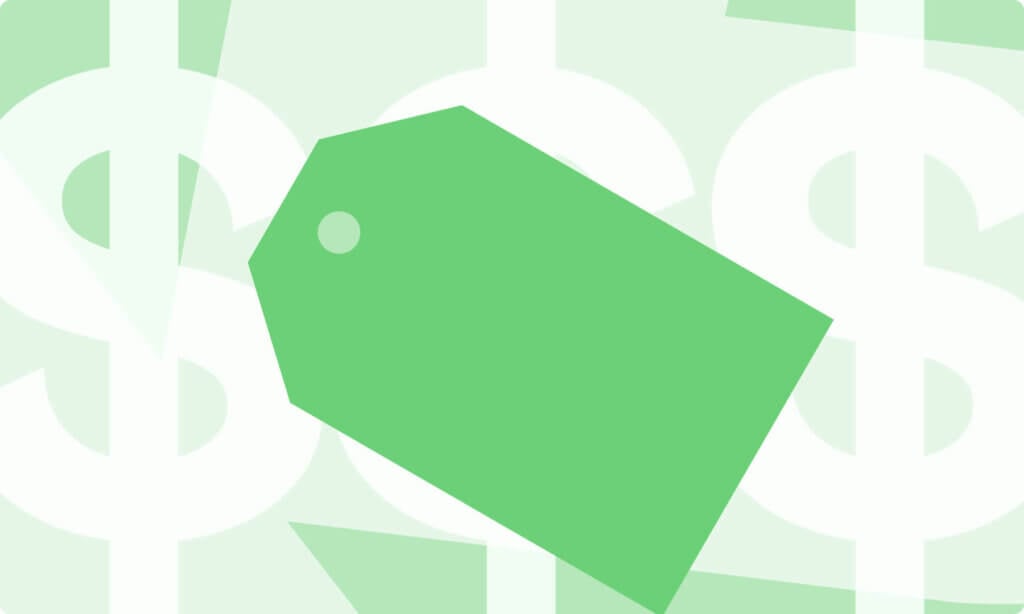
Wenn wir über die besten Online-Marktplätze sprechen, taucht Best Buy oft als Spitzenkandidat auf, vor allem wenn es um Elektronik und entsprechendes Zubehör geht. Der Verkauf auf Best Buy eröffnet Ihrem Unternehmen den Zugang zu einem spezialisierten Kundenstamm, der bereits an technischen Produkten interessiert ist.
Kosten für den Verkauf bei Best Buy
Eine Partnerschaft mit Best Buy ist nicht wie ein Geschäft auf einem beliebigen Elektronikmarkt; es müssen verschiedene Kosten berücksichtigt werden. Die Gebühren können je nach Produktkategorie variieren, beinhalten aber in der Regel einen vom verkauften Artikel abhängigen Provisionssatz. Es ist von entscheidender Bedeutung, auf Aktualisierungen ihrer Struktur zu achten, da sie sich im Laufe der Zeit ändern können.
Darüber hinaus können Vorlaufkosten anfallen, wenn Sie sich für Marketingdienste entscheiden oder an Werbeprogrammen teilnehmen, die die Sichtbarkeit auf der Plattform erhöhen sollen.
Beachten Sie, dass auch für die Bearbeitung von Rücksendungen Gebühren anfallen, was Verkäufer manchmal abschreckt, aber denken Sie daran, dass dies auf den meisten E-Commerce-Marktplätzen üblich ist.
Warum bei Best Buy verkaufen?
Best Buy ist nicht nur ein Geschäft, sondern auch eine der besten Online-Verkaufsplattformen für Unterhaltungselektronik. Dieser Status gewährt den Verkäufern eine unglaubliche Aufmerksamkeit, gepaart mit der Glaubwürdigkeit der Marke eines etablierten Einzelhändlers.
- Vertrauenswürdige Plattform: Kunden vertrauen Best Buy in Bezug auf Qualität und Authentizität, was ein höheres Vertrauen in Ihre Produkte bedeutet, wenn Sie hier gelistet sind.
- Fokussierter Kundenstamm: Wenn Ihre Produkte gut zu technisch versierten Käufern passen, gibt es kaum ein besseres Publikum als das, das Sie bei Best Buy finden.
- Unterstützung bei der Werbung: Mit Optionen wie „Deal of the Day“ und Werbeflächen können Produkte zusätzliche Sichtbarkeit erlangen – wichtig für neue Marktteilnehmer, die sich einen Namen machen wollen.
Darüber hinaus wird die Integration mit Best Buy in der Regel über deren API-System optimiert, was die Bestandsverwaltung effizient und benutzerfreundlich macht – ein wichtiger Aspekt, wenn man bedenkt, wie schnell sich Technologieartikel weiterentwickeln und aktualisiert werden müssen.
Der Verkauf über jeden angesehenen Marktplatz bringt eine Reihe von Herausforderungen mit sich. Wenn man jedoch richtig navigiert und sich auf wettbewerbsfähige Preise und qualitativ hochwertige Angebote konzentriert, können die Verkaufszahlen in Bereiche katapultiert werden, die andere Plattformen aufgrund ihres weniger spezialisierten Charakters vielleicht nicht erreichen würden.
Verkaufen bei Best Buy Canada?
Erfahren Sie mehr über die Integrationen von eDesk und Best Buy und bringen Sie Ihren Kundenservice auf die nächste Stufe
Kundenservice-Software für Best Buy Canada Marketplace-Verkäufer ->
Wish

Wish ist einer der größten E-Commerce-Marktplätze der Welt und verkauft alles von Kleidung bis hin zu Elektronik. Wish wurde 2010 in San Francisco gegründet und ist heute in mehr als 60 Ländern auf der ganzen Welt aktiv. Wish hat 170.000 registrierte Händler und verkauft 900.000 Produkte pro Tag.
Kosten für den Verkauf auf Wish
Wish ist in erster Linie als globale Plattform bekannt, die Kunden mit einer Reihe von erschwinglichen Waren verbindet und ein einfaches Gebührensystem bietet:
- Auflistungsgebühren: Verkäufer können sich darüber freuen, dass das Einstellen ihrer Produkte auf Wish kostenlos ist. Das ist richtig! Sie können zahlreiche Artikel ohne zusätzliche Kosten zum Verkauf anbieten.
- Verkaufsprovision: Sobald Sie Verkäufe tätigen, bekommt Wish ein Stück vom Kuchen ab. Sie berechnen einen Standardprovisionssatz, der in der Regel zwischen 10 % und 15 % jeder Transaktion beträgt. Das bedeutet, dass im Vergleich zu anderen digitalen Marktplätzen mehr Geld in Ihrer Tasche bleibt.
Außerdem lauern keine versteckten monatlichen Gebühren oder Abonnementgebühren hinter der Ecke. Für jemanden, der ohne große Vorabinvestitionen in den besten Ort für den Online-Verkauf einsteigen möchte, könnte Wish die richtige Wahl sein.
Warum auf Wish verkaufen?
Hier erfahren Sie, warum es ein strategischer Schritt sein kann, diesen weltweiten Markt zu erschließen:
- Riesiger Kundenstamm: Mit Millionen von Nutzern, die monatlich den Katalog durchstöbern, haben Sie die Möglichkeit, auf Wish zu verkaufen.
- Genialer Algorithmus: Eine Größe passt hier nicht für alle; stattdessen halten personalisierte Browsing-Erlebnisse die Kunden bei der Stange und erhöhen die Wahrscheinlichkeit, dass sie über Ihre Produkte stolpern.
- Kundenvielfalt: Da es sich um eine wirklich globale Plattform handelt, sind Sie nicht nur auf US-Kunden beschränkt – Ihr potenzieller Kundenpool erstreckt sich über alle Länder und Kontinente.
- Mobile Optimierung: Machen wir uns nichts vor: Mobiles Einkaufen ist heutzutage der Renner. Die gute Nachricht? Die meisten Wish-Transaktionen werden über Smartphones und Tablets abgewickelt, was für die Kunden einen vereinfachten Einkauf und für Sie potenziell höhere Konversionsraten bedeutet.
- Keine Vorabkosten: Erinnern Sie sich daran, dass wir darauf hingewiesen haben, dass für die Auflistung Ihrer Produkte keine Anfangsgebühr anfällt? Das macht das Ausprobieren dieses digitalen Marktplatzes finanziell praktisch risikofrei.
Letztendlich kommt es bei der Entscheidung, wo Sie Ihre Online-Präsenz ausbauen wollen, darauf an, welche Marktplätze am besten zu Ihren Unternehmenszielen und Ressourcen passen. Wenn das Erreichen eines breiten Publikums mit minimalen Vorlaufkosten attraktiv (und profitabel) klingt, dann erwägen Sie die Gewährung von „Wish“ als einen von vielen E-Marktplätzen, die Ihr Inventar wert sind.
Verkaufen auf Wunsch?
Erfahren Sie mehr über die Integrationen von eDesk & Wish und bringen Sie Ihren Kundenservice auf die nächste Stufe
Kundenservice-Software für Wunschmarktplatz-Verkäufer ->
Saks

Saks Fifth Avenue ist ein renommiertes Luxuskaufhaus und die erste digitale Plattform für Luxusmode in Nordamerika, die mit ihrem Online-Marktplatz einen nahtlosen Übergang in das digitale Zeitalter vollzogen hat.
Kosten für den Verkauf bei Saks
Der Verkauf auf Saks.com ist mit einer Reihe von Gebühren verbunden, wie z. B. Verkaufsprovisionen und potenzielle Angebotsgebühren. Die genauen Zahlen hängen von Ihrer Lieferantenvereinbarung und den Produktkategorien ab, in denen Sie verkaufen. Es ist jedoch wichtig, daran zu denken, dass der finanzielle Vorteil einer Verbindung mit einer etablierten Marke wie Saks.com oft die mit dem Verkauf verbundenen Kosten überwiegt.
Warum bei Saks verkaufen
Der Verkauf auf Saks.com bietet Marken, die sich in der Nische von Luxus und Exklusivität positionieren wollen, eine einmalige Gelegenheit.
- Sichtbarkeit in Ihrer Nische: Mit durchschnittlich 1 Million Besuchern pro Tag auf saks.com kann die Listung Ihrer Produkte auf der Plattform enorme Ergebnisse in Bezug auf Reichweite und potenzielle Verkäufe weltweit erzielen.
- Vertrauenswürdige Marke: Die Marke Saks ist seit 1924 ein wichtiger Akteur in der Luxusmodebranche und bekannt für ihren hervorragenden Service. Wenn Sie Ihre Produkte mit der Marke in Verbindung bringen, gewinnen sie an Glaubwürdigkeit.
Der Verkauf auf einer so renommierten Plattform ist mit einigen Herausforderungen verbunden, aber wenn Sie Ihre Produkte strategisch positionieren, haben Sie große Chancen, Ihre Nische zu vergrößern und zu besetzen.
Zusammenfassend lässt sich sagen, dass es beim Verkauf auf dem Saks Fifth Avenue Marketplace nicht nur darum geht, Kunden zu erreichen, sondern auch darum, Ihre Marke in der Elite zu positionieren, Zugang zu einem anspruchsvollen Publikum zu erhalten und vom globalen Ruf eines der weltweit führenden Luxuseinzelhändler zu profitieren.
Verkaufen bei Sak’s?
Erfahren Sie mehr über die Integrationen von eDesk & Sak und bringen Sie Ihren Kundenservice auf die nächste Stufe
Kundenservice-Software für Saks Marktplatz-Verkäufer ->
Madewell

Madewell ist ein gemeinschaftsorientiertes Bekleidungsunternehmen für Männer und Frauen, das sich auf Denim als Hauptproduktkategorie spezialisiert hat. Die Marke setzt auf Nachhaltigkeit, Kundentreue und Gemeinschaft mit Initiativen wie „Labels we love“, die Produkte von Drittanbietern hervorheben.
Kosten für den Verkauf auf Madewell
Der Verkauf auf Madewell.com als Drittanbieter ist mit einer Kostenstruktur verbunden, die sich an den Vorteilen eines engagierten Kundenstamms orientiert. Madewell berechnet Verkäufern in der Regel eine Provision, einen Prozentsatz des Verkaufspreises des Artikels, wenn eine Transaktion stattfindet. Dieses provisionsbasierte Modell stellt sicher, dass die Verkäufer im Verhältnis zu ihrem Verkaufserfolg zu den Einnahmen der Plattform beitragen. Darüber hinaus können je nach den spezifischen Vereinbarungen und Abmachungen weitere Gebühren anfallen, wie z. B. Notierungsgebühren. Für Verkäufer ist es wichtig, die Geschäftsbedingungen von Madewell sorgfältig zu prüfen, um die umfassenden Kostenfolgen zu verstehen.
Warum auf Madewell verkaufen
Wenn Sie eine Modemarke sind, die ihre Reichweite bei engagierten Verbrauchern erhöhen möchte, könnte Madewell die richtige Lösung für Sie sein.
- Kundenorientiert: Madewell ist stolz darauf, eine Plattform entwickelt zu haben, die die Werte der Kunden in den Vordergrund stellt und ein nahtloses Einkaufserlebnis für die eigenen Produkte und die Produkte von Drittanbietern bietet. So profitieren Sie von einem wirklich engagierten und loyalen Kundenstamm, der bereit ist zu kaufen.
- Befürwortung der Marke: Drittanbieter auf Madewell sind als „Labels, die wir lieben“ kategorisiert. Eine solch starke Unterstützung durch eine Marke mit einem wirklich engagierten Kundenstamm kann Wunder für die Glaubwürdigkeit Ihrer Marke bewirken.
- Fokussierter Kundenstamm: Wenn Ihre Produkte die 18- bis 24-jährigen modebewussten Käufer ansprechen, dann ist Madewell vielleicht der richtige Ort für Sie. Wenn Sie Ihre Produkte auf Madewell anbieten, erhalten Sie direkten Zugang zu dieser Zielgruppe.
Verkaufen bei Madewell?
Erfahren Sie mehr über die Integrationen von eDesk & Madewells und bringen Sie Ihren Kundenservice auf die nächste Stufe
Kundenservice-Software für Madewell-Marktplatz-Verkäufer ->
Fanatiker Live

Fanatics Live ist das Livestreaming-Marktplatzkonzept von Fanactis.com, das sich auf den Verkauf von Sport-Tauschkarten spezialisiert hat.
Kosten für den Verkauf auf Fanatics
Als Verkäufer müssen Sie für jedes verkaufte Produkt Transaktionsgebühren zahlen. Die Gebühren umfassen derzeit eine Transaktionsgebühr von 6 % und eine kostenlose Zahlungsabwicklung von 2,9 % + 0,30 $.
Warum auf Fanatics verkaufen
- Engagiertes Publikum: Fanatiker konzentrieren sich auf das Einkaufen als Nebenprodukt der Unterhaltung. Der Livestreaming-Aspekt von Fanatics live führt zu einem hochgradig engagierten Publikum mit echtem Interesse an Sport-Sammelkarten, und da die Zuschauer live auf die Artikel bieten müssen, ist jeder Kauf mit mehr Dringlichkeit und Spannung verbunden.
- Treten Sie mit Käufern in Kontakt: Der Bereich „Live-Shows“ ist auf Fanatics live an vorderster Stelle platziert, so dass potenzielle Käufer genau sehen können, wann Ihre Marke ein Live-Shopping-Event veranstaltet, was mehr interessierte Käufer anlockt. Außerdem haben Sie einen eigenen Shop-Bereich, in dem Sie über anstehende Sendungen und Wiederholungen informieren und den Nutzern die Möglichkeit geben, Ihrem Shop zu folgen, was den Aufbau eines Gemeinschaftsgefühls sehr fördert.
Wenn Sie also im Bereich der Sport-Sammelkarten tätig sind, ist dieses Livestreaming-Marktplatzkonzept ein sicherer Weg, um Ihre Marke bekannt zu machen.
Verkaufen bei Fanatics?
Erfahren Sie mehr über die Integrationen von eDesk & Fanatics und bringen Sie Ihren Kundenservice auf die nächste Stufe
Kundenservice-Software für Fanatics-Marktplatz-Verkäufer ->
